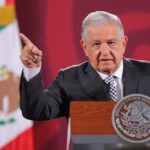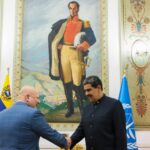
While much has been said about Iran’s nuclear program lately, specifically over the last two decades or so, the country’s urge to acquire nuclear technology actually dates back to much earlier, the 1950s. In 1957, under the then-Shah Mohammad Reza Pahlavi, Iran started a nuclear program by signing a deal with the United States administration of President Dwight D. Eisenhower to provide Iran with equipment and knowhow. And the Atomic Energy Organization of Iran was founded in 1973.
In 1967, Iran signed the nuclear Non-Proliferation Treaty, undertaking to never develop or otherwise acquire a nuclear weapon. But it also gained the right by accession “to participate in […] the fullest possible exchange of equipment, materials and scientific and technological information for the peaceful uses of nuclear energy.”
Under the NPT, “the benefits of peaceful applications of nuclear technology … should be available for peaceful purposes to all Parties […], whether nuclear-weapon or non-nuclear-weapon States.” Such benefits, notably, include “any technological by-products which may be derived by nuclear-weapon States from the development of nuclear explosive devices.” Those dividends were never extended to Iran by Western nuclear-weapon states or non-nuclear-weapon states after the Islamic Revolution of 1979, however.
The revolution brought about an interregnum in the nuclear program. Pahlavi’s last prime minister, Shahpur Bakhtiar, had already canceled contracts for the construction of the Bushehr Nuclear Power Plant with West Germany. Iran’s other partners until then dropped their contractual commitments to the country on their own and left.
RELATED CONTENT: Rejoining the Iran Nuclear Deal is not Enough
The 2000s, when Iran turned to a reluctant Russia to help develop its nuclear program, and the 2010s marked the height of Western political and media attention to the Iranian nuclear program. By then, the country had learned to stand on its own feet, combining decades of past experience with past and present intellectual perseverance to own nuclear technology. That is why the Western acknowledgement of Iran’s nuclear status, brought about formally under the Iran nuclear deal in 2015, was such a belated occurrence; the country had already been entitled to that as well as other benefits of the peaceful use of nuclear energy when it signed the NPT—back in 1967.
The 2015 deal also ended the dispute over the Iranian nuclear program by providing for certain Western demands. But the United States then withdrew from the agreement under President Donald Trump in 2018, effectively rekindling the dispute and threatening to put years of diplomacy to waste.
That prospect, even though it seemed real under Trump, was dimmed when he lost the presidential election in 2020. Trump’s successor, President Joe Biden, had happened to be vice-president when the Iran deal was negotiated. While it remains to be seen whether President Biden will actually put his word to return to the Iran deal into action, the revival of the Iran deal seems like a strong possibility. The two countries, along with the other signatories, namely France, the United Kingdom, Germany, Russia, and China, agreed in Vienna this week to study ways to revive the deal. The Biden administration would have to lift the sanctions that were imposed under Trump, and Iran would have to roll back its gradual reduction in compliance with the deal since the 2018 US withdrawal.
If all goes well, the United States’ return to the Iran nuclear deal would be a second affirmation of the Islamic Republic’s right to peaceful nuclear energy. The West, the United States in particular, has gone through a difficult and lengthy path to such an affirmation. And it has had to repeat itself. It didn’t have to.
Trying to stop or slow the Iranian nuclear program by playing with economic sanctions—for instance as “leverage” in negotiations to revive the Iran deal—has not only been imprudent politically, it has also been impossible practically. Iran has been in the nuclear industry since half a century ago, and nuclear knowhow has percolated inside Iran long enough and well enough to become internalized. (The Israeli regime is stupid, believing that it can eliminate such knowledge by assassinating individual Iranian scientists.) For all its intellectual complacency, the United States has had a delayed understanding of that fact. Isn’t it high time…?
Featured image: National Day of Nuclear Technology – PressTV
(PressTV) By Hossein Jelveh
OT/OH
- orinocotribunehttps://orinocotribune.com/author/orinocotribune/
- orinocotribunehttps://orinocotribune.com/author/orinocotribune/April 24, 2024
- orinocotribunehttps://orinocotribune.com/author/orinocotribune/
- orinocotribunehttps://orinocotribune.com/author/orinocotribune/April 23, 2024
Share this:
- Click to share on Twitter (Opens in new window)
- Click to share on Facebook (Opens in new window)
- Click to share on LinkedIn (Opens in new window)
- Click to share on WhatsApp (Opens in new window)
- Click to share on Reddit (Opens in new window)
- Click to share on Telegram (Opens in new window)
- Click to email a link to a friend (Opens in new window)




